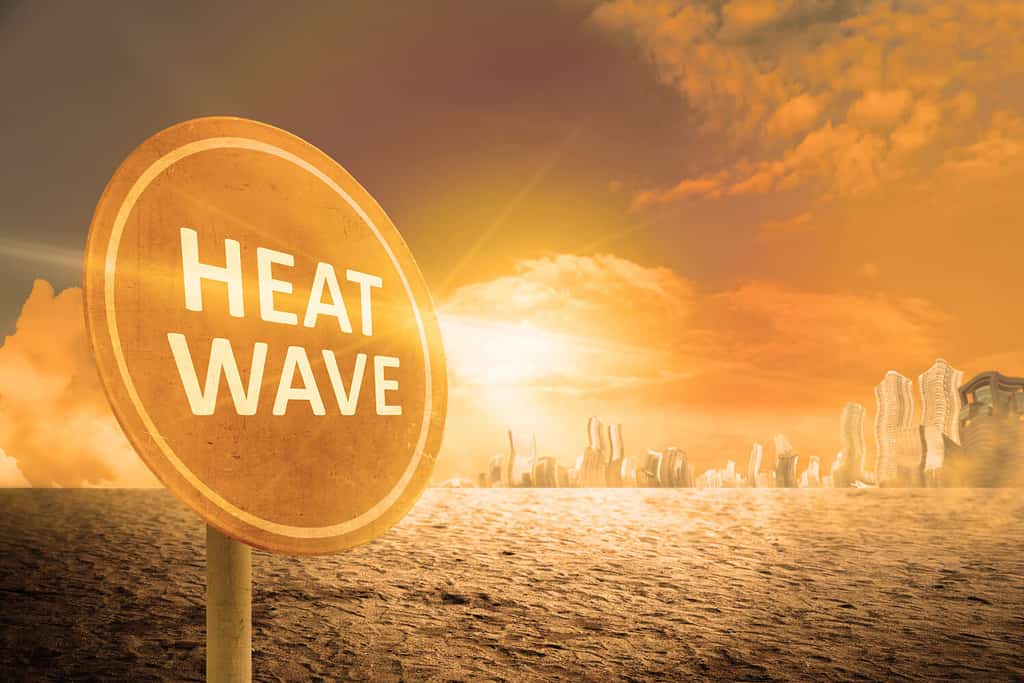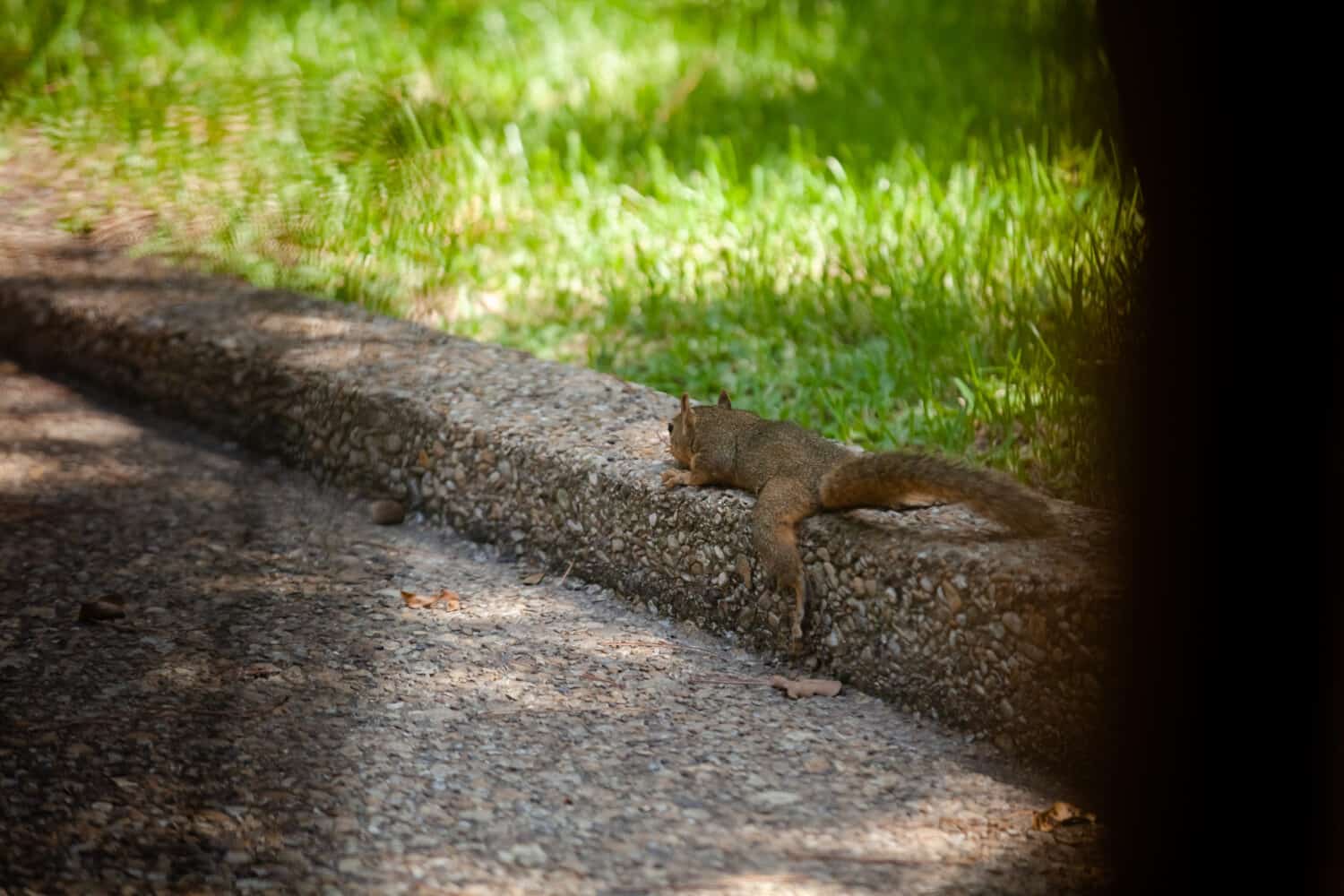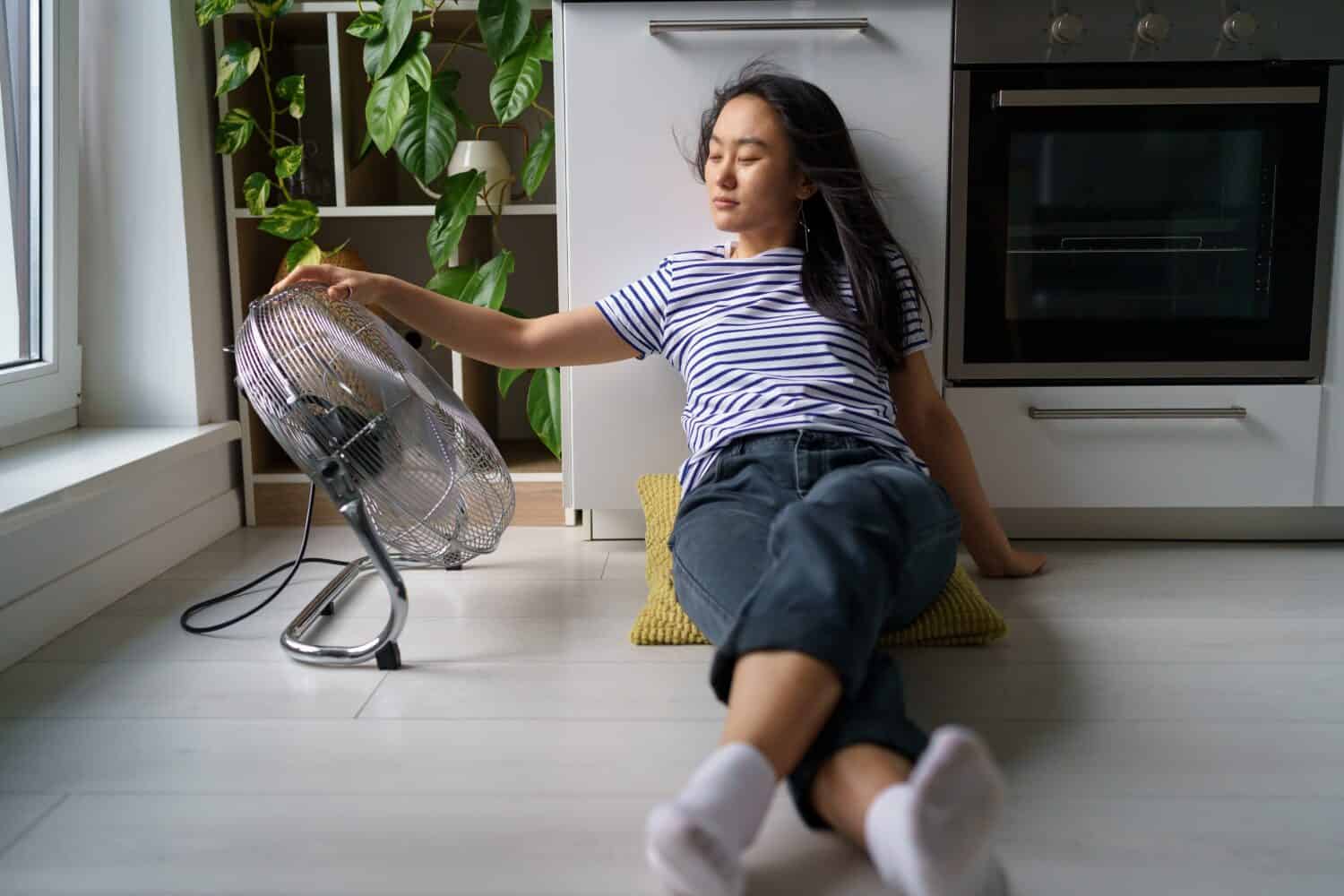Utah is no stranger to hot weather, but the scorching heatwave that hit Salt Lake County shattered records. This happened during a global trend of one of the hottest months ever recorded. In this article, we’ll delve into how this heatwave affected Utah’s residents, including the wildlife. We’ll also highlight the important measures the state implemented to keep people cool and offer practical tips for staying safe in such extreme heat. Exactly how hot was the hottest heatwave in Salt Lake County Utah? Read on to find out.
About Salt Lake County

The county seat for Salt Lake is Salt Lake City.
©Abbie Warnock-Matthews/Shutterstock.com
Salt Lake County is the most populous county in Utah. The population of Salt Lake County is around 1.23 million people, with a growth rate of 1.28%. The 764 square miles are also home to the state capital and the county seat, Salt Lake City. A few of the nearby counties that also experienced the impact of the heatwave include Davis County, Morgan County, and Summit County.
Geography
The name comes from the Great Salt Lake, which borders the county and doesn’t have any outlet. The famous lake is in a mountain valley with the Oquirrh Mountains on the west, and the Wasatch Mountains along the east and north sides. Also, the Jordan River flows northward through the county.
Normal Climate for Salt Lake County
Utahns are used to hot weather. Residents enjoy a desert-like climate with four distinct seasons. Summers tend to be warm and dry, while winters bring plenty of snow.
Averages
Salt Lake City, the county seat, serves as a useful reference point for average temperatures. As spring starts to appear in the city, the average maximum temperature climbs to a pleasant 72.6°F. Moving into the summer season, July claims the spot as the hottest month of the year. July has the highest average monthly maximum temperature, a sweltering 99.7 °F.
In September, the average maximum temperature reaches a comfortable 77.1°F. And by October, you can expect the average maximum temperature to settle at around 64.2°F. As November arrives, the average maximum temperature drops to 50.7°F, signaling it’s time to snuggle up with a steaming hot beverage.
For the winter season, expect an average January temperature of around 31.4°F. The heaviest snowfall blankets the landscape between December and February.
Now, when it comes to precipitation, the city receives an average of 60 inches of snowfall each year. May stands out as the rainiest month, while July takes the title for being the least rainy. That means July is both the hottest and the driest month of the year.
Record Breaking Temperatures

July 2023 was the hottest month for Salt Lake County and the rest of the world.
©Ed Connor/Shutterstock.com
During the heatwave in Salt Lake County, there was a new record high of 106 °F on July 16, surpassing the previous record of 103 °F set in 2010. On July 22, the temperature also reached 106 degrees, breaking the 2022 record of 104 degrees. Yet, as hot as the heatwave got, it never broke the state’s hottest temperature on record, a staggering 117 °F.
Hot Restless Nights
Even the nighttime didn’t provide much relief, as overnight lows set new records too. On July 23, the temperature dropped to just 82 degrees, breaking the previous low of 79 degrees in 2019. On July 27, it was only slightly cooler, with a low of 78 degrees, surpassing the old record of 77 degrees set in 2021.
Worldwide Heatwave
But Salt Lake City wasn’t alone in its heat misery. July 2023 became the hottest month recorded worldwide since 1880. Turns out similar extreme heatwaves were recorded in places as far-flung as Mexico, Italy, and China.
The heatwave in Salt Lake County was part of a larger one that stretched from California to Florida, lasting over 40 days in some areas and breaking a staggering 2,300 records. Take, for instance, Phoenix, AZ, experiencing 31 days in a row of temperatures over 113 degrees!
Devastating Heatwave Impacts

The extreme heat forced residents to seek air-conditioning and made working outside nearly impossible.
©leolintang/Shutterstock.com
How did the heatwave impact Utahns? The oppressive temperatures made outdoor recreational activities pretty much impossible. If you had air conditioning, you probably stayed inside as much as possible, while avoiding activities, like cooking, that might heat things.
Residents
Every choice matters during a heatwave. Being outside during the middle of the day in a heatwave makes heat-related illnesses more likely. Things are the most dangerous between the hours of 10:00 a.m. and 5:00 p.m. The peak heat hours usually occur between 12 PM and 4 PM.
When the extreme weather began, the National Weather Service began issuing excessive heat warnings. Residents were encouraged to stay hydrated and find nearby cool areas. But staying cool isn’t as easy as it sounds. Especially for those with outdoor jobs
Outdoor Workers
As the hot weather persisted, the U.S. Department of Labor took action by issuing a heat hazard alert. The alert was a way to remind employers of their responsibility to protect outdoor and indoor workers from heat illness or injury. Employers and workers had to be smart about staying hydrated, pacing themselves, and taking frequent breaks. And whenever possible, taking a long break in an air-conditioned space could also help.
State-Wide Power Outages

Thousands of Utahns lost power during the extreme heatwave.
©Antonio Guillem/Shutterstock.com
Heatwaves are notorious for causing power outages, and the heatwave that hit Salt Lake County was no exception. Losing power is annoying in any situation, but during a heatwave, it can be deadly. Without air conditioning, the extreme weather was all the more dangerous.
In Salt Lake Valley alone, thousands of residents were left without electricity. According to Rocky Mountain Power’s outage map, there were around 40 outages, impacting nearly 4,500 customers by mid-July. In the southern city of St. George, where temperatures soared to a scorching 112 degrees on a Sunday, officials reported numerous power outages. Additionally, in Sandy and Draper, over 2,000 Rocky Mountain Power customers found themselves dealing with power disruptions.
Buckling Roads
The power grid wasn’t the only casualty. The triple-digit temperatures also began straining water systems, and buckling roads. Utah’s Department of Transportation reported buckling on multiple roads across the state. Affected areas included Interstate 15 at 2900 S and Highway 89 in Layton and the intersection of Redwood Road and North Temple.
What About Environmental Impacts?
What does a heatwave in a desert-like environment do? For starters, the low relative humidity in southern Utah increases the risk of dangerous wildfires, as dry vegetation becomes fuel. This lack of humidity also contributes to elevated nighttime temperatures.
Plus there’s always the risk of a severe drought. Even though Utah had a wet winter before the heatwave, the scorching temperatures made a short-term drought likely again. And the delayed monsoon season only made things worse.
How Did the Wildlife React to the Extreme Heat?
Utah is home to a lot of creatures, big and small. Here are some of the wildlife impacted by the heatwave in Salt Lake County:
- Bighorn Sheep
- Cougars
- Bobcats
- Badgers
- Ring-Tailed Cats
- Rodents
- Deer
- Condors
- Bison
- Mule Deer
- Coyotes
- Wild Sheep
- Migratory Birds
- Burbot
- Eagles
- Elk
- Moose
- Bears
- Antelopes
- Hawks
Given Utah’s already desert-like climate, many of the local animals are well-prepared to endure the harsh heat. They’ve developed various behavioral adaptations to cope with scorching temperatures. For instance, many wildlife species have adopted nocturnal habits, avoiding the extreme daytime heat by only emerging at night. Some examples of these nocturnal creatures include certain snakes, owls, bats, and more.
During daylight hours, many animals in Utah seek refuge in the shade provided by trees to stay cool. Some even seek out cool microclimates, such as the shade under plants. For instance, mammals like white-throated wood rats construct nests within prickly pear cactus clumps, creating insulated shelters during the day. Others, like the desert tortoise, prefer to stay underground, spending the hottest part of the day in burrows to escape the intense heat. Burrows provide insulation and protection from temperature fluctuations.
Rodents are experts at surviving extreme weather. Take, for instance, the kangaroo rat, who has the advantage of special kidneys that are great at storing lots of water. These nocturnal rodents use burrows too, helping them avoid the hottest temperatures.
Another example of an animal that’s great at handling the heat is the bighorn sheep. Their hair helps them breathe and stay cool. They can handle high temperatures by raising their body heat and using both panting and sweating.
Vultures have a more quirky way to beat the heat. They sometimes urinate on their legs to encourage evaporative cooling. It’s kind of like they’re simulating sweat.
Splooting Squirrels: A Survival Pose

Squirrels sploot by sprawling out their arms and legs, this helps transfer heat away from their bodies.
©MMCRP/Shutterstock.com
Have you ever seen a splooting squirrel? Splooting is a unique behavior where squirrels seek cool surfaces and stretch out on their stomachs with their legs spread to cool down. By sprawling out they’re able to transfer heat away from their bodies. It’s not just squirrels that engage in this cool-down behavior; other animals also sploot to beat the heat. Bears, rabbits, dogs, and cats, have all been caught in this silly-looking pose.
Highlighting Heatwave Relief Efforts
Utah was well-prepared to offer residents relief from the extreme heat through designated cool zones. Salt Lake County has been actively implementing its “Cool Zones” initiative for a decade now. These air-conditioned spaces offer individuals a break from the heat where they can unwind and access information about heat-relief programs. Additionally, water is often provided for visitors.
Most importantly, cool zones are entirely free of charge. Typical locations include senior centers, libraries, and recreation centers. Some cooling centers are open to all ages, while others serve the senior population. It’s smart to call ahead or check the cool zones website before making the trip out there.
Utah Community Action
When the heatwave hit, Utah Community Action, initiated six programs. The organization serves communities in Salt Lake, Weber, Morgan, Davis, and Tooele counties. One initiative is the Home Energy Assistance Target (HEAT) program, to assist eligible individuals with their utility bills.
The HEAT program received federal funding through the Low-Income Home Energy Assistance Program (LIHEAP). Eligibility criteria at that time included individuals with children under the age of six, seniors aged 60 and above, and individuals with disabilities.
How to Stay Cool When Things Heat Up

Use fans in your “cool room” to promote air circulation.
©DimaBerlin/Shutterstock.com
Every little bit you can do to stay cool will help you survive a heatwave. For starters, stay inside the a.c. whenever you can. Avoid direct sun exposure during the hottest hours, typically between 2 p.m. and 5 p.m. If outdoor activities are necessary, apply a high-SPF sunscreen for protection, especially if you’ll be in the sun for more than 20 minutes.
Dress appropriately. Help your body release heat by wearing lightweight clothing for hot weather. Avoid cotton, as it doesn’t provide effective cooling, and remember to wear a wide-brimmed hat and sunglasses.
When it comes to eating during a heatwave, opt for snacks with complex carbohydrates like trail mix for sustained energy without causing digestive discomfort. Avoid heavy meals that can increase your body’s heat production during digestion.
Before you leave the house, check the weather forecast and pack an emergency kit with essential items for handling injuries. Next, make sure your phone is charged, and bring a backup charging bank. You have to have a way to communicate with people, even if you’re just going out for a short trip. Finally, never leave the house without telling someone. Always inform someone about your location and consider bringing a companion.
Watch Out for Heat Exhaustion
Stay alert for signs of heat exhaustion or heat stroke, such as dry and hot skin, muscle cramps, lightheadedness, a rapid pulse, and confusion. If you suspect you’re overheating, cool down immediately. Seek shade, and cool down with water or ice. Seek medical assistance if your body temperature rises above 103 degrees.
Set up a Cool Room
Does your home have a cool room? Setting one up only takes a little bit of time, and it can bring you a lot of comfort during extreme temperatures.
Pick the coolest room in your house and cover all of the windows with aluminum foil. The aluminum foil will help reflect the sunlight, and keep out some of the heat. It’s best to choose rooms with north-facing windows to block heat and light from the southern sun during the day while allowing for cool outside air at night.
If you’re not sure what room’s coolest, it’s best to select rooms on the lowest level of the house. They tend to be cooler due to heat rising. You can also put wet sheets in front of windows and doors to create a cooling effect. Sleeping in wet sheets and clothing can also help in extreme heat situations.
It’s also smart to use fans in your cool room. Multiple fans will help create a nice cool flow of air.
These tips are just the start. What else can you do to stay cool? Check out Be Ready Utah. This government site has a lot more of these tips to help you stay chill and safe during a heatwave.
The photo featured at the top of this post is © Ed Connor/Shutterstock.com
Thank you for reading! Have some feedback for us? Contact the AZ Animals editorial team.






